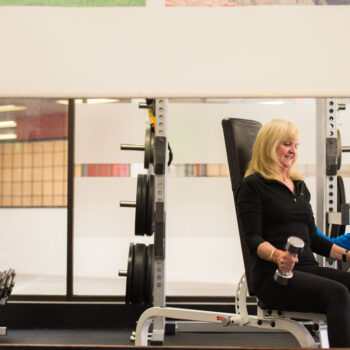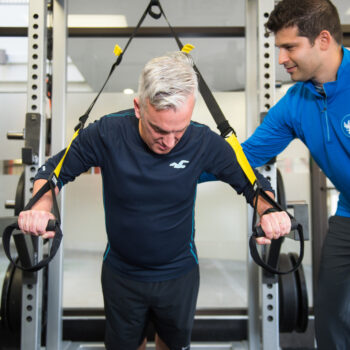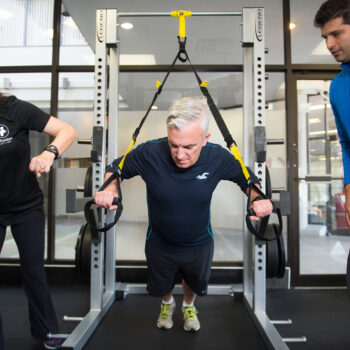What is Carpal Tunnel Syndrome?
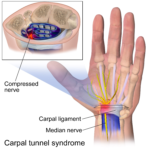
Carpal Tunnel Syndrome (CTS) is caused by excessive pressure on the median nerve which runs on the palm side of the hand. The nerve passes through an area of the wrist called the carpal tunnel, which is a narrow passageway. When the carpal tunnel is inflamed, it is capable of compressing vessels and nerves passing through. The median nerve innervates the hand as well as the length of the arm, and causes stress to these areas when agitated or impinged.
Why is Carpal Tunnel Syndrome Bad for You?
CTS will limit activities of daily life and hinder participation in sports and leisure events such as cooking and doing house work. It is best to treat carpal tunnel early on at the onset of detection. Prolonging the time to receive treatment will only worsen the situation, and may lead to permanent nerve damage in the future. Numbness may cause loss of sensation in the fingertips, which has a direct correlation with weakness and may result in a loss of grip strength.
Risk Factors for Carpal Tunnel Syndrome

CTS is often caused by performing repetitive tasks such as typing, assembly work, or knitting work. The use of power tools that cause frequent exposure to vibrations also increases the risk of carpal tunnel. It is crucial to take adequate rest in between work to ease up consistent tension. Previous injury to the wrist or inflammation in the area can also lead to a greater possibility of getting CTS. In addition, females are more likely to experience carpal tunnel as opposed to men. This is due to the fact that women possess a smaller opening in the carpal tunnel, which can lead to a greater risk of compression in the vessels and nerves passing through. Click here to read more about risk factors for CTS.
Symptoms of Carpal Tunnel Syndrome
Symptoms of CTS typically do not occur instantly and rather over a duration of time. Once early signs (tingling, numbness in your hands and forearms) are detected, immediately limit movements causing stress to the area. Other symptoms include wrist pain, a burning sensation, and / or swelling. If you feel tingling, numbing or persistent soreness in your hand / forearm region, please consult your doctor or a medical professional to assess whether or not you may have CTS.
Methods to Prevent and Treat Carpal Tunnel Syndrome
Non-surgical Methods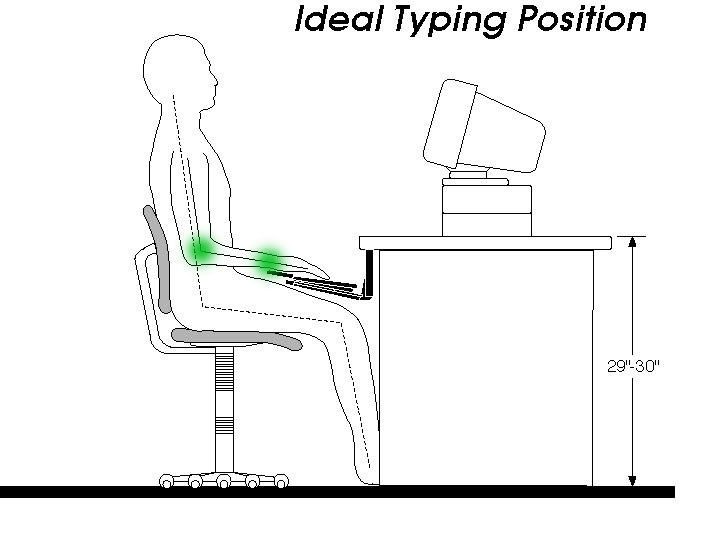
If repeated motions are mandatory, try using alternative equipment such as a different sized keyboard or changing the height of your desk. If possible, try to avoid fully flexing or extending your wrist and maintain a neutral position (see photo above). If you are having trouble controlling this motion, a splint can be purchased to hold your wrist still and prevent further aggravation. A wrist splint can be beneficial while you sleep to prevent excess flexion and extension at the wrist joint. The primary objective is to keep your wrists straight and relaxed. For temporary relief, shaking out your hand for 5-10 seconds will suppress the pain.
Other helpful non-surgical treatments include icing the inflamed area 10-15 minutes at a time. This may reduce swelling and pain by reducing blood flow to the affected area. Additionally, non-steroidal anti-inflammatory drugs such as Advil can be taken to reduce inflammation to localized areas (such as the hands).
Surgical Treatments
Surgical methods to treat carpal tunnel is often used as a last resort. When non-surgical methods are not working or existing condition goes beyond repair, surgery is the only option. Carpal tunnel release can be performed to treat the injured area. More information can be found here.
Kevin Kwok – Studio Coordinator
 Kevin enrolled in numerous sports program as a child, which exposed him to an active lifestyle early in life. He played ultimate frisbee competitively at the junior level while in high school. Kevin now focuses his training exclusively on dragon boating. He has been paddling for the past 3 years and hopes to make the Canadian National Team in 2019. He hopes he can motivate others to accomplish their short and long term fitness goals
Kevin enrolled in numerous sports program as a child, which exposed him to an active lifestyle early in life. He played ultimate frisbee competitively at the junior level while in high school. Kevin now focuses his training exclusively on dragon boating. He has been paddling for the past 3 years and hopes to make the Canadian National Team in 2019. He hopes he can motivate others to accomplish their short and long term fitness goals



